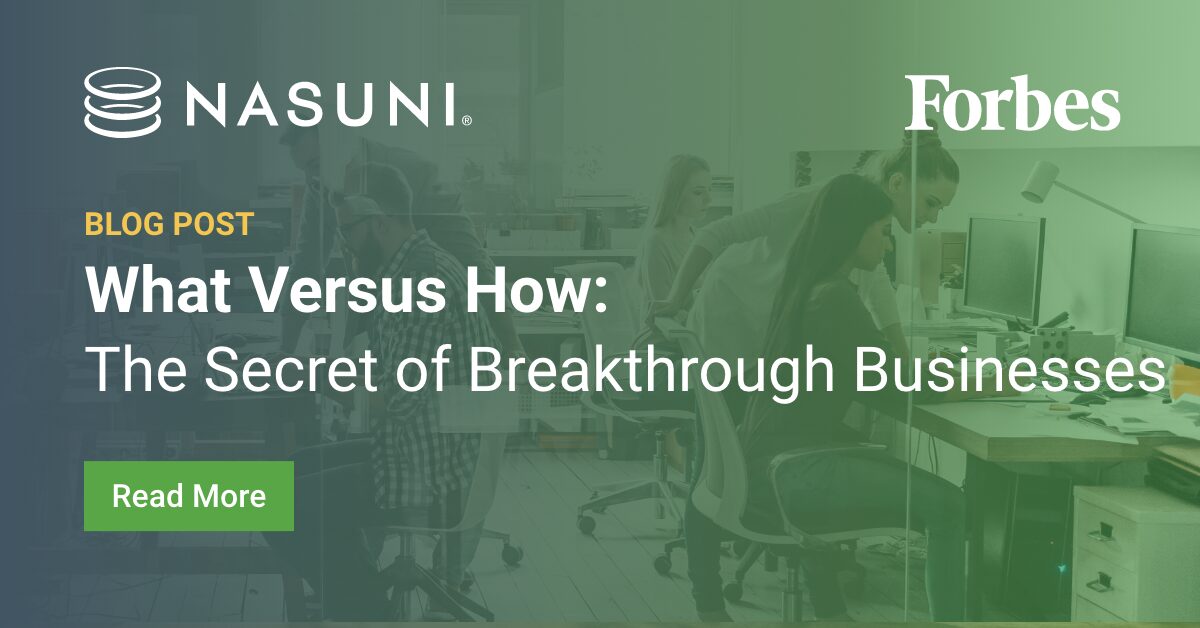What Versus How: The Secret Of Breakthrough Businesses
What you do always matters more than how you do it. Relentlessly focusing on what you do and improving that as technology evolves is the only way to keep from becoming irrelevant.
November 2, 2021

This blog was originally posted to the Forbes Technology Council.
When Steve Jobs introduced the iPhone in his now legendary 2007 keynote, the device was set on a collision course to upend, among many other things, the world of photography as it was then known. The companies behind two of the most memorable technology brands of the latter half of the twentieth century — Kodak and Polaroid — completely folded in the midst of this upheaval. Yet these companies and their leaders can’t simply look back and blame Apple. The fault is theirs alone. They fell victim to a strategic illness that weakens many companies. They made the mistake of focusing on the “how” instead of the “what,” and, because of that, their businesses didn’t survive the digital revolution.
So, what did Kodak do? They allowed people to capture pictures. Simple enough. As the company grew, it developed a business model that devalued the camera itself and generated revenue from selling film and chemicals and the certification of processes. This was a beautiful business, as every photo you took generated a small tax that went back to the company. Through shrewd marketing, the company taught us that no vacation, no birthday and no moment in life was complete if it couldn’t also be preserved as a Kodak Moment. That was a huge achievement of the same order as the packaging of that chemical technology into a system that was consumer-friendly and extremely profitable.
Kodak was making it easier for us to make memories by having pictures that would bring back little bits of frozen life. How was Kodak doing that? They developed a camera, a film system and, most importantly, a proprietary process that took your film and, a couple of weeks later, give you back a stack of beautiful, glossy paper prints.
By the time Polaroid arrived on the scene, Kodak was already the uncontested 800-pound gorilla of photography. Polaroid could have never beaten Kodak at their own game. So, they targeted the how — and pioneered a process that eliminated the two-week delay and the need to send film to a lab in order to get prints. They made pictures instant. Polaroid looked at a booming market, asked a bold question and capitalized. Kodak couldn’t respond to this change because they were so stuck on how they delivered photos to their customers and how they made their money. So, Polaroid grabbed a sizeable chunk of its market share.
Success is tricky, though. Polaroid soon fell into the same trap as Kodak, rendering digital photography incomprehensible to both companies as a business. The technology wasn’t a surprise. It didn’t materialize out of the ether — Kodak developed some of the early digital cameras. But both companies were so stuck in their ways that they couldn’t see the potential value in this new way of capturing images. No film? No cartridges? No process? How were they supposed to make money?
They were so focused on the how and not the original, broader what that they failed to see the possibilities. Kodak declared bankruptcy the same year that Facebook bought a little photo-sharing app called Instagram for a $1 billion bargain.
I’ve been guilty of this what versus how problem myself. At my first startup, we began as a consultancy, then shifted and became a product company. Yet that original mindset — and the idea that we deserved to earn revenue for every hour of work — stalled our progress. Even after we completely changed our business, we remained stuck on how we’d made money in the past, and we never quite reached our hoped-for level of success. In the years since, I’ve learned that truly great companies think beyond their sticky revenue models and the how of product or service delivery.
What you do always matters more than how you do it. Relentlessly focusing on what you do and improving that as technology evolves is the only way to keep from becoming irrelevant. By remaining flexible, you stand a much better chance of being first, or at least being there and finding a way to capitalize when the new what becomes apparent.
As a technology executive, I’m constantly reminding myself and pushing my team to think about the “what” first and about the “how” as subordinate — a transient means to an end. I think about that in my own field of cloud storage and data protection and regularly ask whether my company is adapting and opening itself to new possibilities. That way, we can build something truly transformative and lasting.